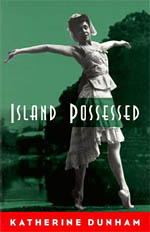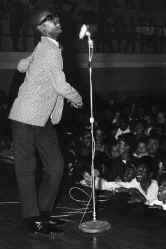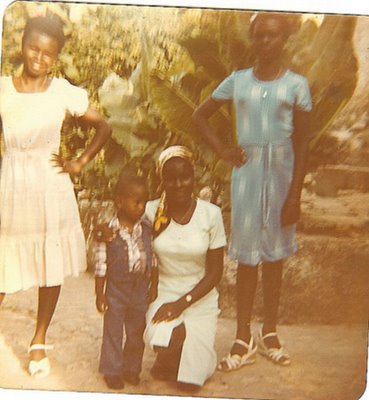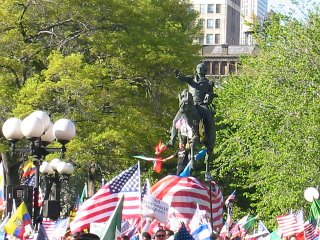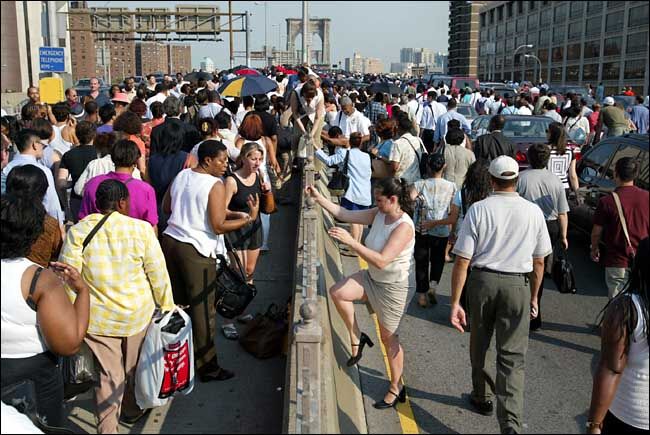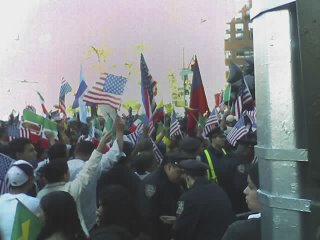Keeping with this “Intellectual Chocolate” theme, I’m reluctant to invoke Du Bois unnecessarily, but I have no other words to articulate this but to say that I am wrestling with a minor bout of “double-consciousness.” You see I have two guilty pleasures occupying my mind these days and I am not sure how either of one is contributing to making my life or the world a better place. Unless of course making me and I presume other folks happy can count toward making the world better.
These two guilty pleasures are both musical and each channel sides of me that at my advanced age I sometimes wonder if its best kept hidden. The first song is Chamillionaire’s “Ridin Dirty.” It’s the first rap song that I have heard in a while where I could truly say that I get it. “Ridin Dirty” does not have any of the bells and whistles that tend to attract me to rap music these days (e.g. sick production that completely overshadows weak lyrical skills or intricate word place that has me feeling myself each time I figure out one of the puns). The production and lyrics are tight, but what makes this song stand out for me is that it tells a tale that I could easily relate to as a black man—the seemingly never ending mission of cops to catch black men “ridin dirty.”
Call it what you will racial profiling, racism or police harassment, but it does very little to accomplish its goals of stopping criminals. Instead it creates another terrain in which black men could be suspicious of police officers. In full disclosure I have never been pulled over by a cop while driving, but that has not made me any more comfortable whenever they were within range and I was driving because I was always mindful of the hassle that might ensue if I were to get pulled over. I always wondered if my suspicions about them, might give them a reason to stop me—and causing an unnecessary disturbance for both parties. That was until I was pulled over once, not while driving mind you, but while riding my bike in my
My girlfriend at the time and I were on our way back from a Sunday afternoon bike ride through Prospect park and Park Slope. We had just about around the corner from her apartment so I hopped on the sidewalk in anticipation of my ensuing dismount. At which point I was stopped by two members of NYPD. At first I was told that I was stopped because riding a bike on the sidewalk is illegal in
At this point my girlfriend has caught up and vouches to the fact that she lives just around the corner—but now the officers’ story has changed to “there’s been an unidentified black man” snatching purses as he rides by on the sidewalk and they want to check on whether I have any “outstanding warrants.” While thumbing through my wallet/pockets for my driver’s license I come across my Yale ID—which I produce for the officers first (since they only asked for an ID. I gave them an ID) and then when I come across my license I give it to them. “Uh, You’re a student at Yale,” the officer who has the Yale ID in his hand asks. “yes, I am in fact a Ph.D. candidate there,” I reply.
The other one who has my driver’s license looks stunned and trying to regroup himself asks “why do you have a
“I grew up in
Meanwhile the other officer holding the Yale ID is still stunned, “wow you go to Yale!” he declares while turning over the ID to his partner.
His partner stares at the ID for a few moments, looking at me and the picture to make sure it is in fact the same person and that the name matches up with that on the driver’s license—seeing that they are one in the same he proceeds to inform me that they are going to let me off with a warning this time, and that for future reference I need to be careful about riding on the sidewalk, and tells my girlfriend to be wary of the purse snatcher.
It’s still not clear to me how I actually violated any laws necessitated me getting stopped and receiving a warning—but I do know that these officers were intent on making me feel like a suspect and worse so one in a “crime” that was not even remotely connected to why I was stopped. If this can happen to me on a bike—then I need not imagine what happens when they stop men in cars, which are larger and therefore offer officers more space to “search.”
So when I hear Chamillionaire’s “Ridin Dirty,” I feel as I immediately get it, there’s no need to wonder whether or not he has had this experience, because I have had it and just as the song suggests these incidents are less about whether the person stopped is innocent or guilty of a crime, but that citizens and officers have been resigned to taking part in a cat and mouse game that benefits no one.
Switching gears, this second song, Shakira’s “Hips Don’t Lie,” has just been stuck in my head ever since I heard in
Now how does this contribute to my double-consciousness while I’m very content in my life as a professor, and am drawn to explicating the real life connections between a song like “Ridin Dirty,” another part of me believes that I was born to dance…and maybe even to belly dance. While Shakira’s hips don’t lie, I wonder whether or not I am living one and that I may in fact be the Haitian Michael Flatley…the lord of the dance…the belly dance.
These questions are not going to be answered with one blog entry, so while I plug along writing my books and articles and teaching the good fight, I’m also going to keep on practicing my hip drops and waiting on that coin belt a friend promised me….
Now if if the song does not stick in your head—hopefully that image will.







